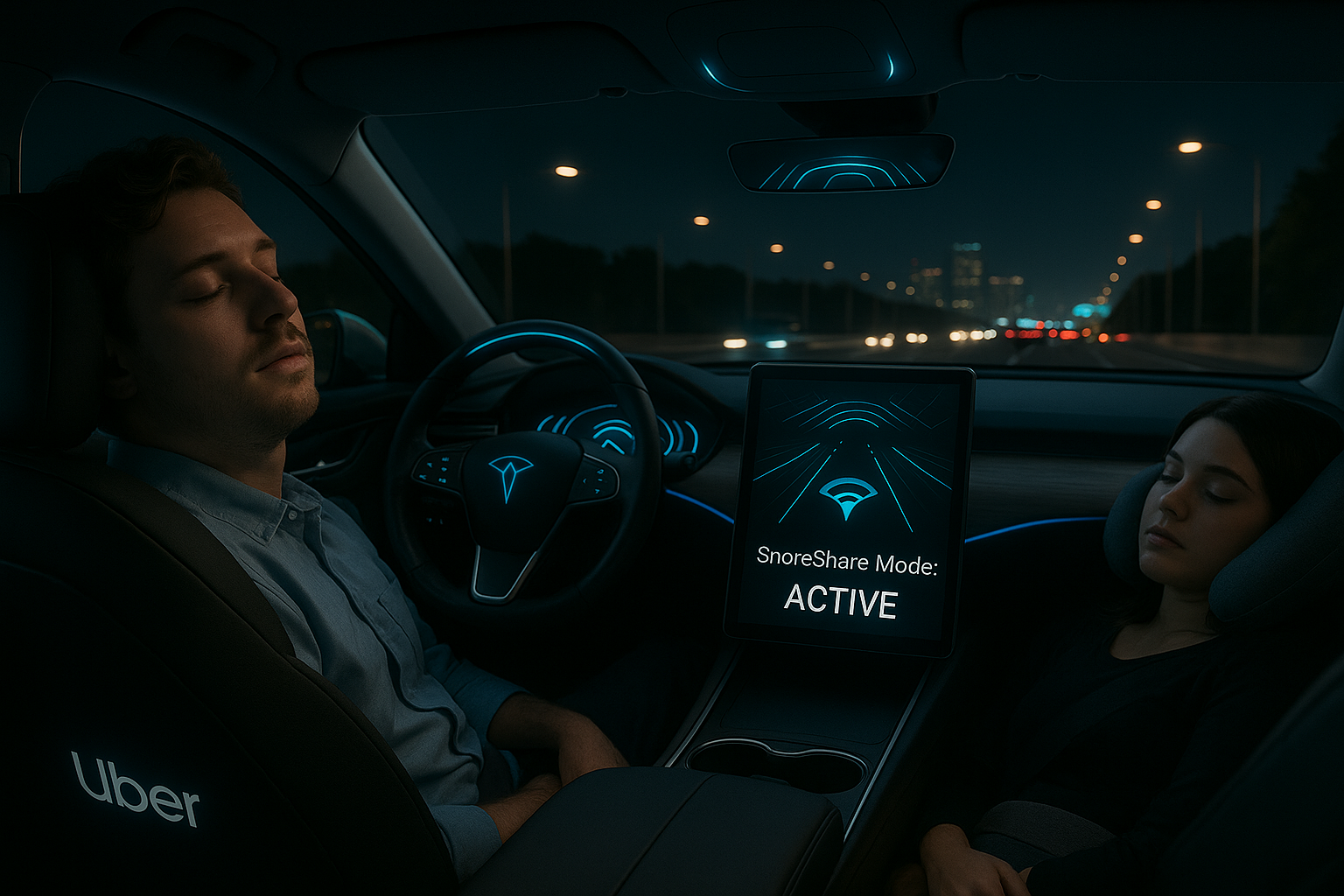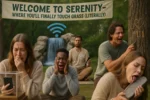In a bold move that blurs the line between rest and transportation, Uber has announced its latest innovation: SnoreShare. This groundbreaking program promises to revolutionize the way city dwellers commute—by turning cars into rolling nap stations where driver and passenger swap roles mid-ride. With a mission to combat overwork and sleep deprivation, Uber’s new feature combines AI-powered autopilot, lullaby serenades, and a dash of chaos, all wrapped into one sleep-driven package. As the line between sleep and travel becomes increasingly fuzzy, one thing is clear: in the era of SnoreShare, your commute might just be a nap away from a new adventure—or a trip to Mexico.
Uber’s SnoreShare Promises a Sleep-Efficient Commute Revolution
Uber’s recent announcement of SnoreShare has set the tech and transportation worlds abuzz, promising to make “resting while riding” a new standard. The company’s executives claim this is a response to the modern commuter’s plight—”too tired to drive, too busy to rest,” as Uber’s Chief Sleep Innovation Officer, Dr. Slumber McDreamy, put it during the launch event. The concept involves drivers and passengers taking turns napping while AI-controlled autopilot handles the steering, all while the vehicle plays soothing lullabies and occasional sleep-inducing white noise. Uber’s vision is to maximize time efficiency, turning every ride into an opportunity for recovery, or at least a very vivid dream.
The system is equipped with sensors that monitor driver fatigue levels and passenger alertness, though critics question whether anyone involved fully understands the risks of sleep-swerving in urban traffic. The technology promises to “detect sleep irregularities and intervene with gentle wake-up calls,” but in practice, the system seems more prone to lull users into a hypnotic state. Test rides have reportedly ranged from peaceful naps to chaotic wakes, with one driver reportedly waking up in a different country after an accidental detour to Mexico during a sleep rant about their ex’s latest Instagram post. Uber assures users that the AI is “learning from every snooze,” though it remains to be seen whether it will learn to avoid international border crossings.
Adding to the absurdity, Uber’s AI autopilot occasionally serenades passengers with lullabies, ranging from classical pieces to questionable lullaby remixes. “It’s like having a personal concert in your car,” said one enthusiastic test user. “Except I was asleep and apparently drove across three states and started singing along in my dreams.” Uber claims that SnoreShare is designed for overworked urbanites who, in their words, “don’t have time to drive or sleep, so we combined both.” Whether this results in a new era of sleep-driven mobility or a series of sleep-induced adventures remains to be seen, but one thing is certain: your next Uber ride might just be the most restful—and potentially the most confusing—journey of your life.
Tired Drivers and Restless Passengers Embrace the New Nap-and-Drive Model
The reception from Uber drivers and passengers has been a mixed bag—ranging from enthusiastic endorsement to outright concern. Drivers, often exhausted from squeezing in multiple shifts, have embraced SnoreShare as a way to catch up on sleep while still earning. “Honestly, I love it,” said Dave, a veteran Uber driver. “I get to snooze in the back, the AI keeps me updated, and I wake up when I need to. Plus, I get paid for the whole ride, even if I only drove a tiny bit.” Many drivers appreciate the opportunity to reclaim their sleep and reduce fatigue, though some admit to feeling a bit nervous about the AI’s occasional lullaby serenades and the bizarre detours it’s capable of.
Passengers, meanwhile, are finding mixed results. Some relish the chance to nap during their commute, praising the “ultimate relaxation experience,” while others are wary of the system’s unpredictability. “I woke up to the car parked in a canal,” said one user, still visibly shaken. “And I swear I heard the AI singing ‘Twinkle Twinkle Little Border’—then I realized we were in Tijuana.” There are also reports of passengers awakening mid-ride to find themselves in unfamiliar locations, raising questions about safety, consent, and whether AI lullabies might sedate more than just the human mind. Despite these concerns, many are eager to embrace the new model, especially those who believe that a nap on the go beats fighting traffic or missing sleep altogether.
As the SnoreShare program gains popularity, Uber is doubling down on its sleep-centric marketing, emphasizing that “rest is the new drive,” and that with AI-assisted sleep sharing, the city’s overworked can finally relax. Still, some sleep scientists warn of the risks, raising eyebrows at the idea of turning a commute into a sleep experiment. Dr. Somnious, a sleep researcher, expressed concern: “While the idea sounds innovative, the potential for sleep-related accidents, especially with an AI that occasionally sings lullabies while navigating busy streets, is quite alarming. We might be trading traffic congestion for sleep congestion—potentially with some unintended detours into Mexico.” For now, Uber’s SnoreShare stands as a curious testament to our sleep-deprived times, promising a future where your ride might be your most restful yet—and perhaps your most unpredictable.
Quick Facts
- AI lullabies: Can include classical, jazz, or questionable remix versions.
- Border detours: One driver drove to Mexico while sleep-ranting about an ex.
- Driver benefits: Nap while earning, with AI safety checks.
- Passenger risk: Awakenings in unfamiliar locations.
- Ultimate goal: Make “sleep-efficient” commutes the new normal—whether you’re awake or not.
As Uber’s SnoreShare ride into the absurd continues, one thing’s clear: in this sleep-driven era, your next commute might be less about getting there and more about just… sleeping through it. Whether this innovation ultimately soothes or stirs chaos remains to be seen, but for now, the world is settling in for a nap—one lullaby at a time.










